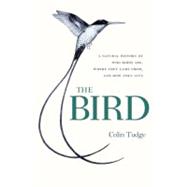
| List of Illustrations | p. ix |
| Preface | p. xi |
| A Different way of being | |
| What It Means to Be a Flier | p. 3 |
| How Birds Became | p. 27 |
| Dramatis Personae | |
| Keeping Track: The Absolute Need to Classify | p. 69 |
| All the Birds in the World: An Annotated Cast List | p. 101 |
| How Birds live their lives | |
| The Eating Machine | p. 197 |
| The World as an Oyster | p. 245 |
| Idyll and Mayhem: The Sex Lives of Birds | p. 263 |
| Families and Friends | p. 323 |
| The Mind of Birds | p. 365 |
| Birds and us | |
| Living with Birds and Learning from Birds | p. 399 |
| Epilogue: A Matter of Attitude | p. 421 |
| Further Reading and Notes | p. 431 |
| Acknowledgments | p. 437 |
| Index | p. 439 |
| Table of Contents provided by Ingram. All Rights Reserved. |
The New copy of this book will include any supplemental materials advertised. Please check the title of the book to determine if it should include any access cards, study guides, lab manuals, CDs, etc.
The Used, Rental and eBook copies of this book are not guaranteed to include any supplemental materials. Typically, only the book itself is included. This is true even if the title states it includes any access cards, study guides, lab manuals, CDs, etc.
Excerpted from The Bird: A Natural History of Who Birds Are, Where They Came from, and How They Live by Colin Tudge
All rights reserved by the original copyright owners. Excerpts are provided for display purposes only and may not be reproduced, reprinted or distributed without the written permission of the publisher.